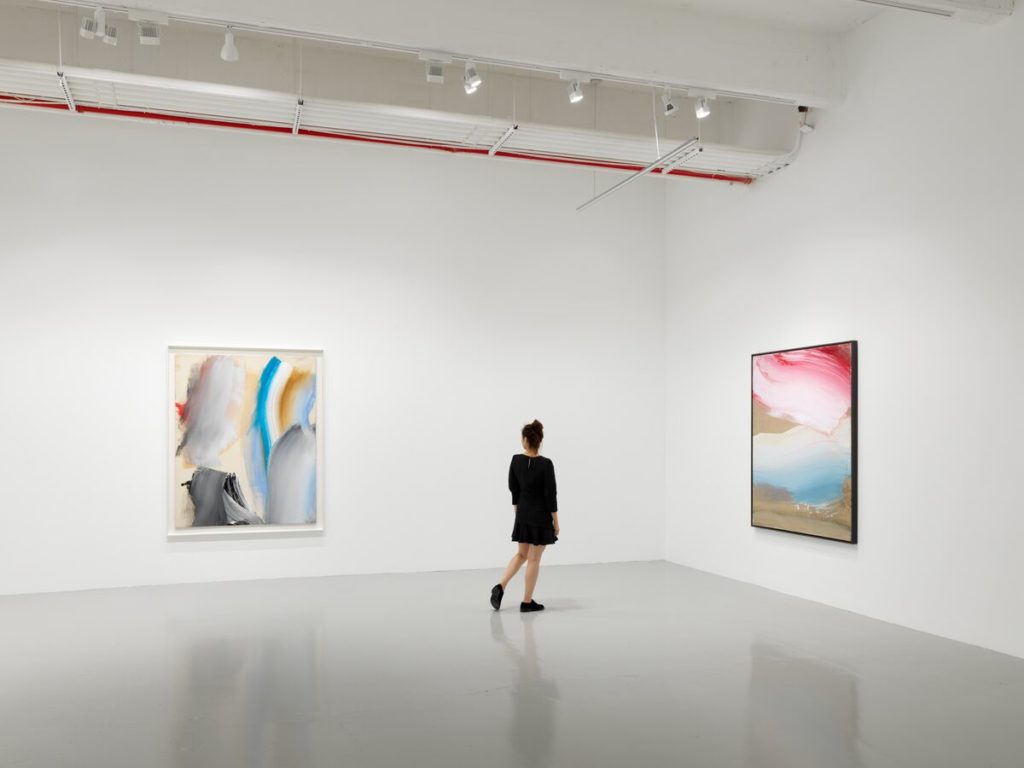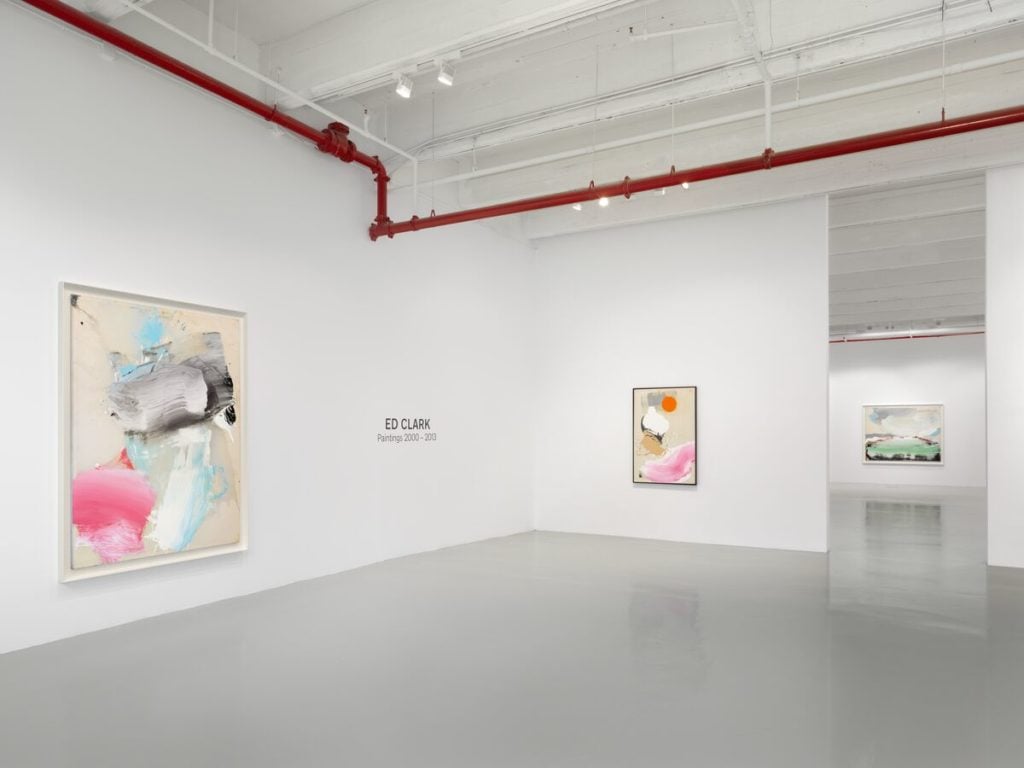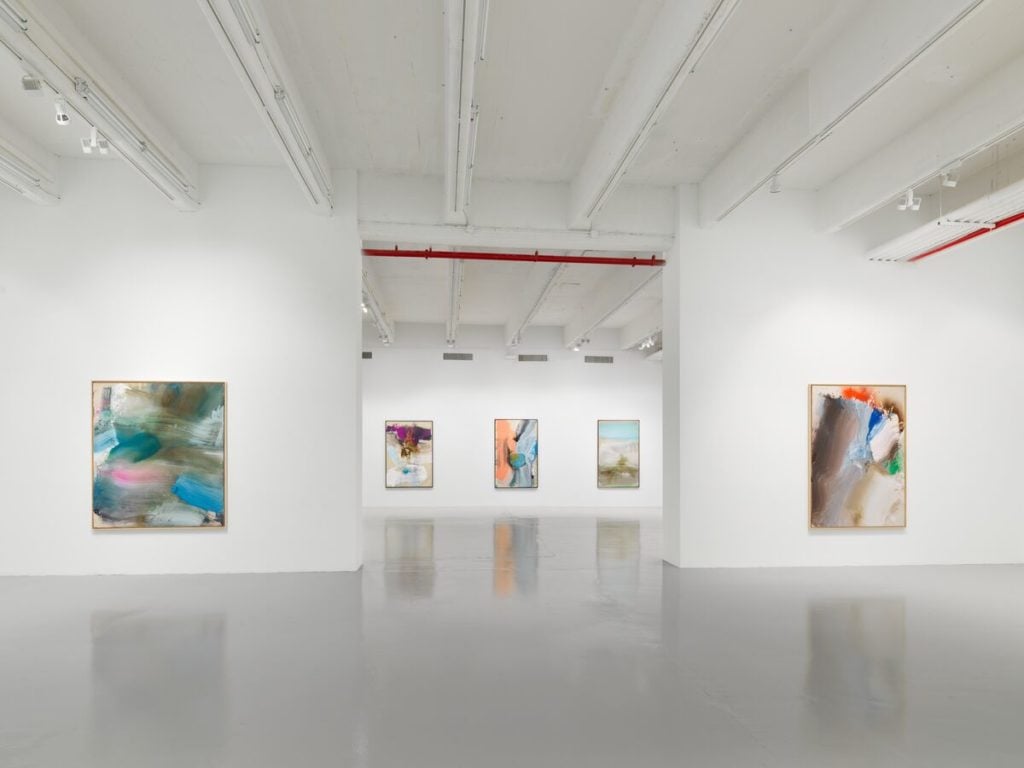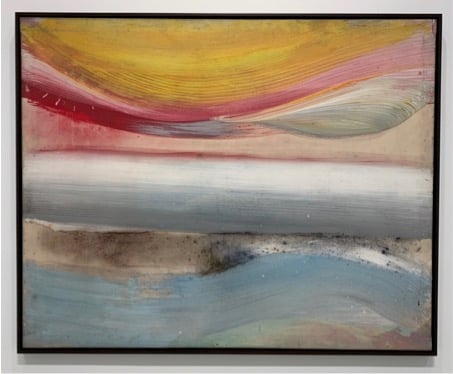On View
Painter Ed Clark’s First Hauser & Wirth Show Radiates Effortless Beauty. But It’s the Product of Decades of Toughing It Out
For those who've long supported Clark, his new status as a major figure is confirmation of what they've always known.

For those who've long supported Clark, his new status as a major figure is confirmation of what they've always known.

Charles Moore

It was late July when the news hit the internet: “Ed Clark now represented by Hauser & Wirth.”
The Swiss super-gallery represents the top of the top, showing the likes of Philip Guston, Zeng Fanzhi, and Rashid Johnson. Clark is hardly an unknown quantity. He has had well-reviewed shows at Tilton and Mnuchin galleries in recent years (the latter amounting to something of a career survey). But his first show at Hauser & Wirth certainly represents a clear statement of faith that the contemporary interest in and vitality of the 93-year-old painter’s work isn’t going away. Titled simply “Ed Clark,” it features fifteen paintings from 2000–2013.
In an email, Melanca Clark, the artist’s daughter, expressed the excitement of the moment: “We’re so pleased to partner with Hauser & Wirth on this absolutely beautiful exhibition of my father’s recent paintings.”

Installation view of “Ed Clark” at Hauser & Wirth, New York. Photo by Daniel Bradica, courtesy of Hauser & Wirth.
Clark wasn’t always considered blue chip—in fact, he wasn’t until very recently. Back in 2007, you could have easily picked up a mid-1980s push broom painting from a Swann Gallery auction for less than $25,000. Even at that price, it went unsold. In May 2019 at a Phillips auction, the momentum had definitely shifted: a 2007 work that had been estimated to sell between $80,000–120,000 came in at $337,500 once the hammer came down.
Race had something to do with that. For the majority of his long career, very few collectors were making an effort to buy the works of African American artists and white-dominated art institutions didn’t provide opportunities for career advancing criticism. The art world in Paris, however, didn’t care what color you were, and for Clark, as for many African American artists in the immediate aftermath of World War II, it offered space to explore. He lived there in the 1950s, and has travelled frequently since, harvesting influences in terms of tonal combinations and composition that he adds into the mix of his art.

Installation view of “Ed Clark” at Hauser & Wirth, New York. Photo by Daniel Bradica, courtesy of Hauser & Wirth.
As a testament to Ed Clark’s longevity, his first show was way back in 1955 at a YMCA in Chicago. While he’s known for his use of the broom to create dynamism on the canvas, he has also been credited as one of the first—if not the first—artist to paint on a shaped canvas. Artists like Adger Cowans, Herbert Gentry, Howardena Pindell, and Sam Gilliam all have paid homage to the influence Clark has had on their work.
One can only imagine the tenacity needed to hang on for so long, but you get a sense of how Clark’s obstinacy paired with an unyielding belief in his own art has served him well. In the Hauser & Wirth galleries, one abstract work, Untitled (2000), is suggestive of a glowing sun hovering over a beachfront view. Overall, this collection of art radiates a sense of contentment, at this moment when his reputation has at last caught up to his achievement.

Ed Clark, Untitled (2000). Image: Charles Moore.
Historically, a lot of his support came from the African American art community by default. Alaina Simone, a multi-faceted African American art world professional, remembers first seeing Clark’s work in Detroit in the late 1990s, introduced by the legendary Motor City gallerist George N’Namdi. “Meeting Ed was great,” Simone told artnet News. “He had travelled the world and he used a push broom to paint the work—which was like a comment on his ability to think outside the lines.”
Despite his long list of achievements, for many longtime Clark fans it’s still exciting to see him get his due in a way rarely achieved by living artists of color of his generation. The recent mainstream success may, indeed, make it even more important to take note of the networks that have nurtured the conditions, over long years, for his new level of new renown. Others who have championed him in their way over the past four decades include Peg Alston Fine Arts, a historically important New York private dealer who focused on advocating for black artists, and the artist David Hammons, who is said to have one of the largest collections of Clark works and has been an advocate behind the scenes.
Private gallerist Alitash Kebede is another longtime Clark fan. She has had a career spanning over three decades focused on collecting and exhibiting black artists, and remembers learning of Clark while visiting Peg Alston. Kebebe’s space, Alitash Kebede Fine Arts in Los Angeles, first showed Ed Clark painting—way back in 1988.
“After a while, the truth comes out,” Kebede said to artnet News on the occasion of the Hauser & Wirth show. “A painter as good as Ed Clark eventually must be appreciated and respected.”
“Ed Clark” continues at Hauser & Wirth, 22nd Street, New York, through October 26, 2019